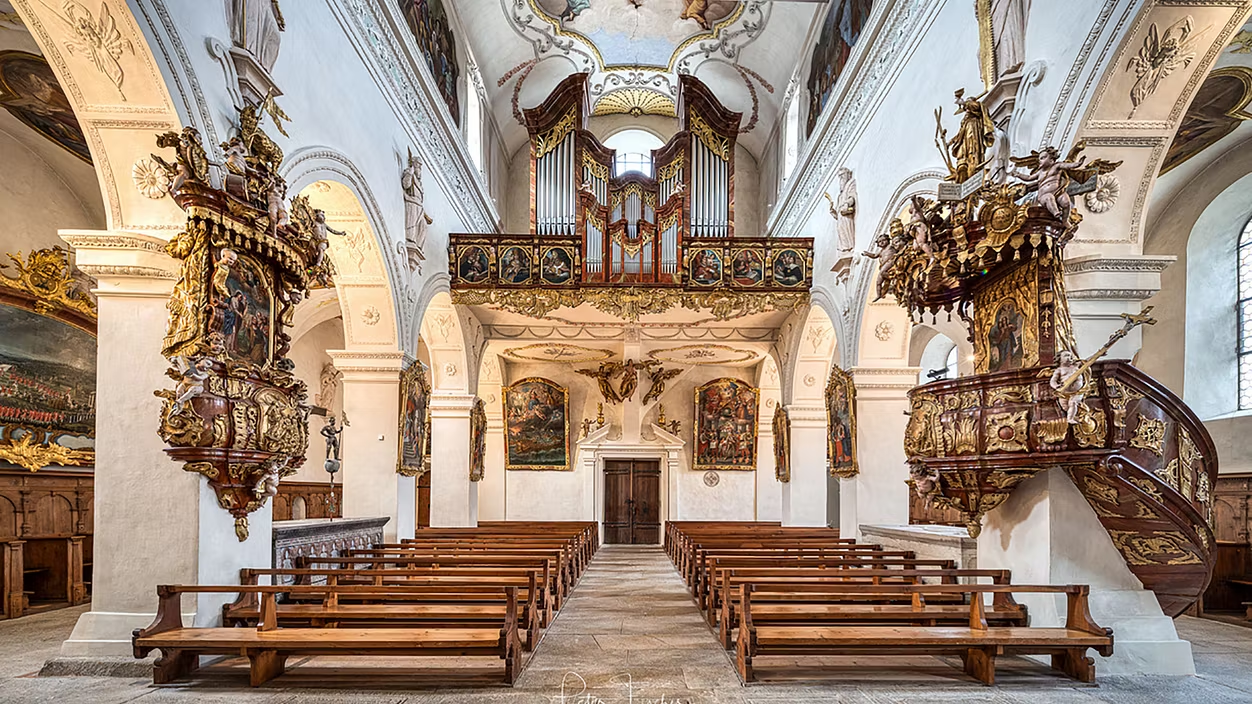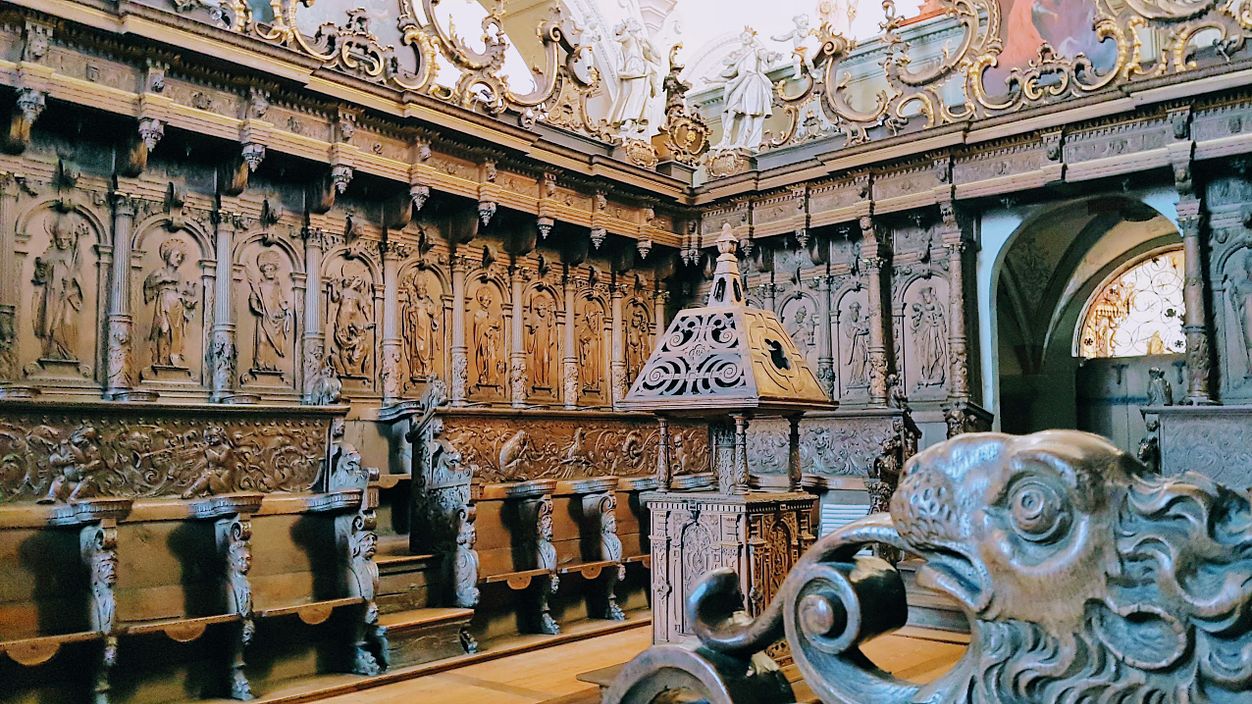Wettingen Abbey
About Museum Aargau
Hauptmenü

Wettingen Abbey church is divided by an imposing rood screen into a spiritual and a secular area:
The abbey church can be visited freely, and church services are held here regularly. The monks' church is part of the museum (admission fee payable). For more information, see Opening hours and admission fees.
Museum Aargau also offers guided tours for groups and schools. The church can be rented for church weddings and baptisms as well as other events (including concerts).
The exterior of the church still preserves much of its sober early Gothic layout from the 13th century, but shows the interventions of modern times. The portal on the porch, renewed in 1760, adds a special Baroque touch, with a group of figures of Our Lady and the founders of the order, St. Bernard and Robert of Molesme.
The ridge turret crowned by an onion dome dates from the same period. Next to the main portal is a plaque in honour of Alberich Zwyssig, composer of the Swiss Psalm and Cistercian monk.
The basic Gothic structure of the church can still be seen in the ribbed vaulting of the side aisles and the row of columns with pointed arches. The interior of the Romanesque-Gothic basilica has been fitted out in the Baroque style. Ornamental bands and stucco figures of saints, on the other hand, are later additions. The rich illustration follows clear rules.

The abbey owes its name and coat of arms to its founding legend (see abbey history). The large panel painting also refers to this legend. This hangs on the west wall of the lay church and depicts the "stormy sea voyage" as well as the appearance of the Stella Maris.
In the centre of each of the two side aisles is an image related to the transfer of the relics of Marianus and Getulius in 1651. In the north aisle, the grisaille painting by the artist Rudolf Schwerter from Baden, created around that time, is a direct reminder of the transfer. The anonymous painting of monumental proportions on the opposite side commemorates the 100th anniversary of the transfer. This celebration was one of the most magnificent Baroque festivities in Aargau. From this time on, the church was also open to the general public for the first time.
Also in the converse church are two stone sarcophagi of the houses of Kyburg and Habsburg, as well as floor grave slabs from the 13th century.
The centre of the high altar is the scene of an Assumption, against the background of light falling through the windows. The chapel altars, the abbot's throne and celebrants' seats form a coherent whole with the high altar.
The richly carved choir stalls are especially celebrated. Their rectangular arrangement is entirely Renaissance. Gothic features can still be seen in the elongated robed figures beneath the column arcades. In the carvings, a humorous artist's fantasy unfolds in tendril friezes, animals, grimaces, arabesques and fruit hangings.

In the abbey church of Wettingen there are a total of eight bells that form a complete C major scale. The bells are located behind the blinds, which are clearly visible to the naked eye from the outside. In the onion dome itself there are four bells.
As is common practice, the bells strike every quarter of an hour. Swinging bells are only rung early on Saturday evenings and on Sundays, as well as on request for official occasions such as christenings, weddings for the entrance and exit of the bride and groom, or for funerals.